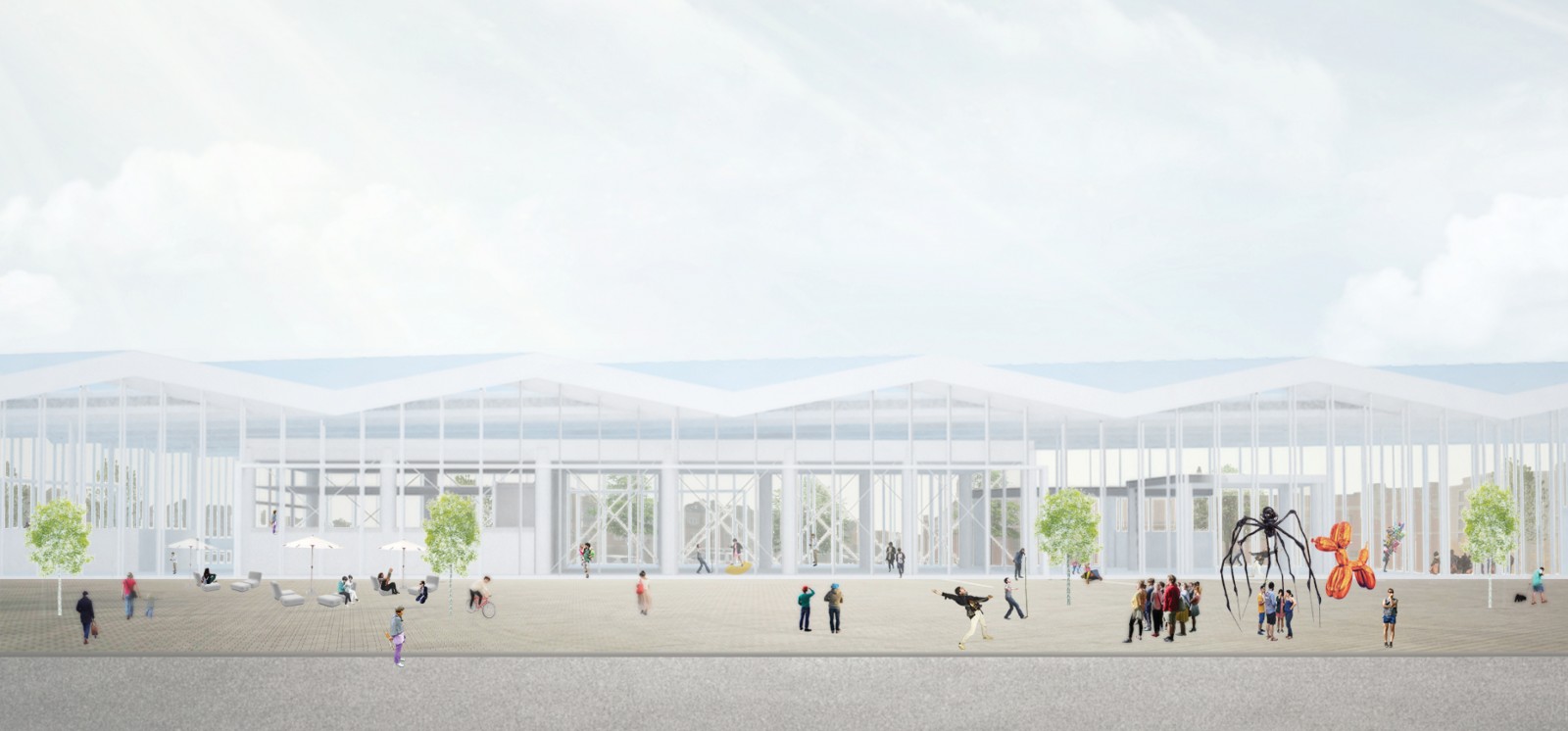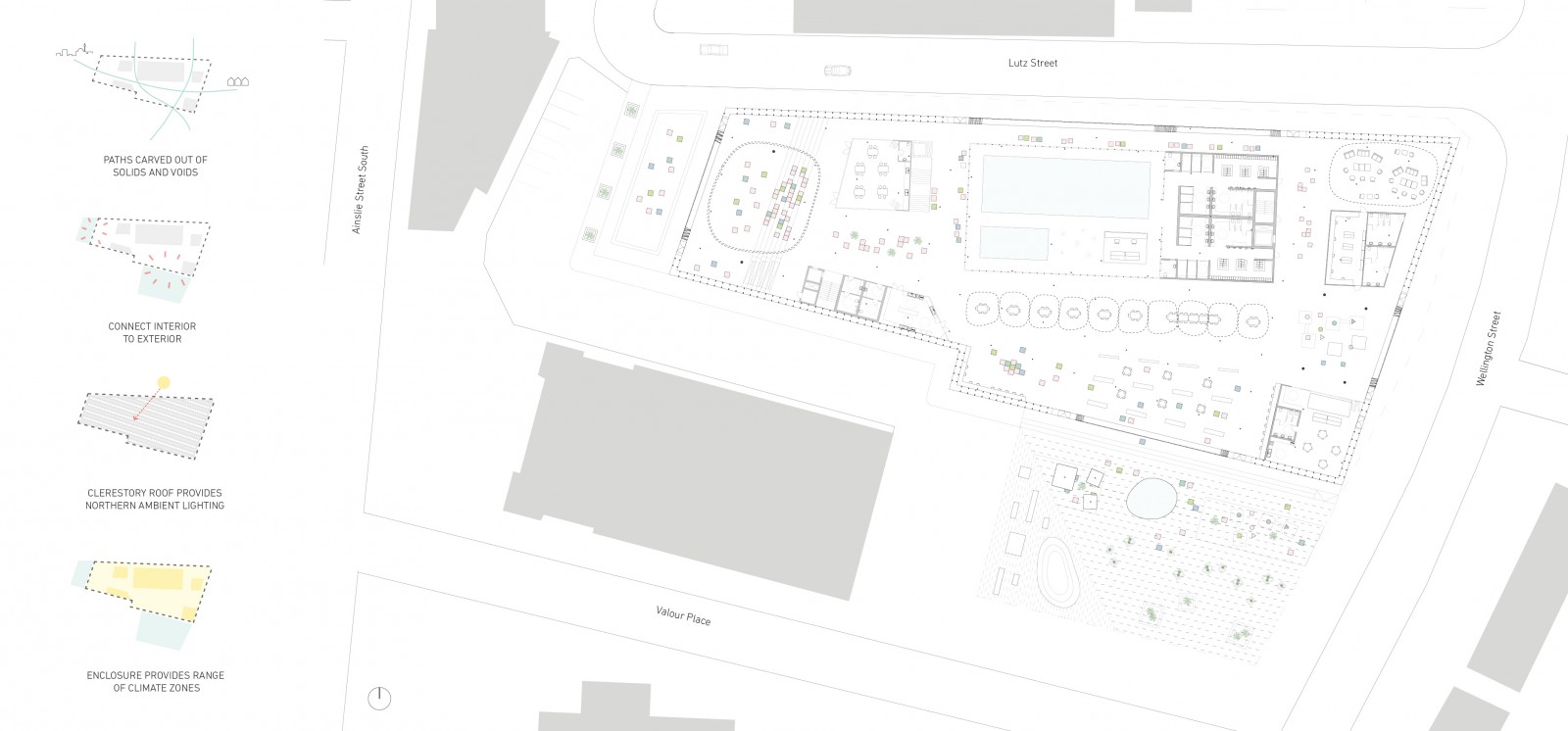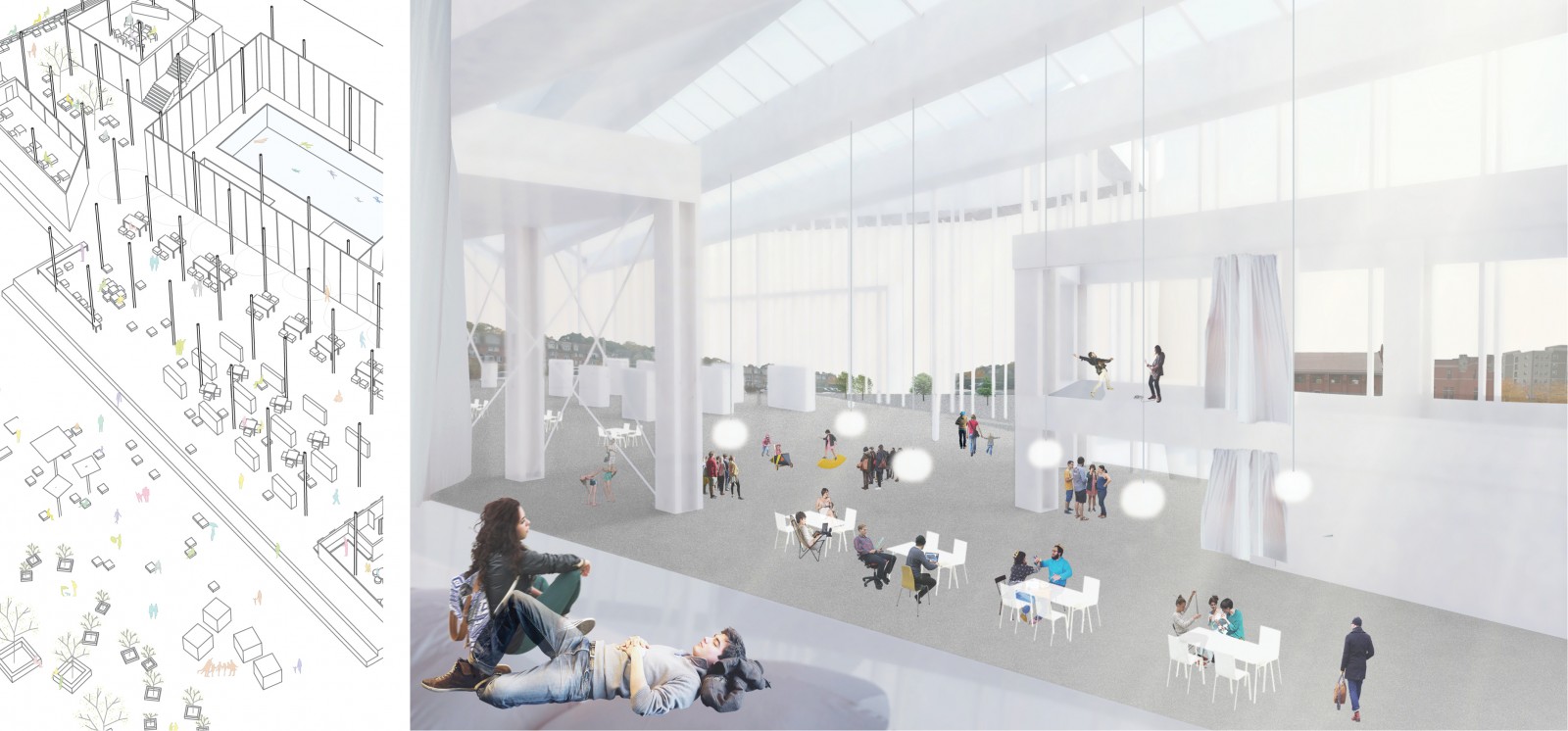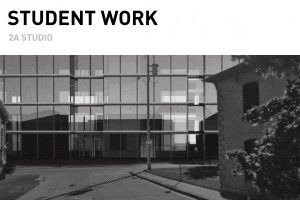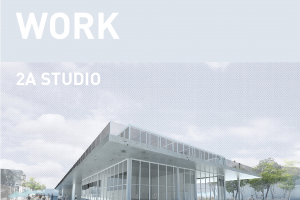Monday and Thursday are studio days. On these days in particular, the third floor undergraduate studio is filled with a frenetic energy of design, research, and exploration. Students can usually be found talking excitedly with design professors and classmates in a habitat saturated with trace sketches, study models, and empty coffee cups. Every week we’ll share a completed project, churned out from this energetic studio environment.
Interested in having your work featured on our STUDENT WORK Monday series? Check out our BRIDGE Contact page for submission details.
2A Studio, September 2013 | PLAY-HOUSE by Alexandra Kay-Siu
Studio professors:
Adrian Blackwell, Michael Bartosik, Clara Romero, Marie-Paule Macdonald, Delnaz Yekrangian, Scott Sorli, Ryszard Sliwka
Project brief:
Cambridge Common- a space of action and distraction. Galt once boomed as a manufacturing center in southern Ontario. As its industry has declined so has the coherence of its urban form and public spaces. Today its downtown is dotted with vacant lots that now house parking, but which once were the sites of important civic institutions. The purpose of this project is to design a new public space and public institution for the city that can intervene in this patchwork to improve the functioning and connectivity of the urban center. You should select a site that you think has the most potential to strategically function as an acupunctural point and whose transformation can have positive effects on the city around it. As you design the building, consider carefully the way it frames the open public space and the ways in which it relates to the buildings that surround it in the city. How do its interior spaces open and connect to the exterior both through the movement through doors and views through windows.
Design statement:
PLAY-HOUSE is a new community centre that is aimed towards revitalizing Cambridge’s downtown core. Inspired by the way children can anonymously interact with one another so comfortably, the design attempts to bring the people of Cambridge together in the same way. Ideas about children’s curiosity, creativity and comfortability translate into a design that is largely focused on indeterminate, open and continuous spaces. Similar to how a playground allows for freedom of movement, the community centre also allows for the public to self-organize.
The form is derived from the industrial shed, which hints at Cambridge’s past history, and in turn attempts to infuse that into Cambridge’s current identity. The production work that occurs within an industrial shed also happens to re-translate into the production of play and interaction that happens within the community centre. Programs such as the multipurpose auditorium, open-library and the curtain-concealed community rooms encourage transparency and stimulate a range of possible activities. More particular programs and functions like the pool, art studio, kitchen, daycare, and administration office are enclosed, and help to shape the open-concept programs. Their relation with one another are carefully considered by way of how they may spill in and out of one another; from solid to void space, and vice versa.
With such intents, the community centre hopes to intensify activity within the downtown area. By offering a multitude of possibilities and experiences to the public of Cambridge, while also allowing for the users to create an experience for themselves, PLAY-HOUSE can be a welcoming addition to the story of Cambridge.


